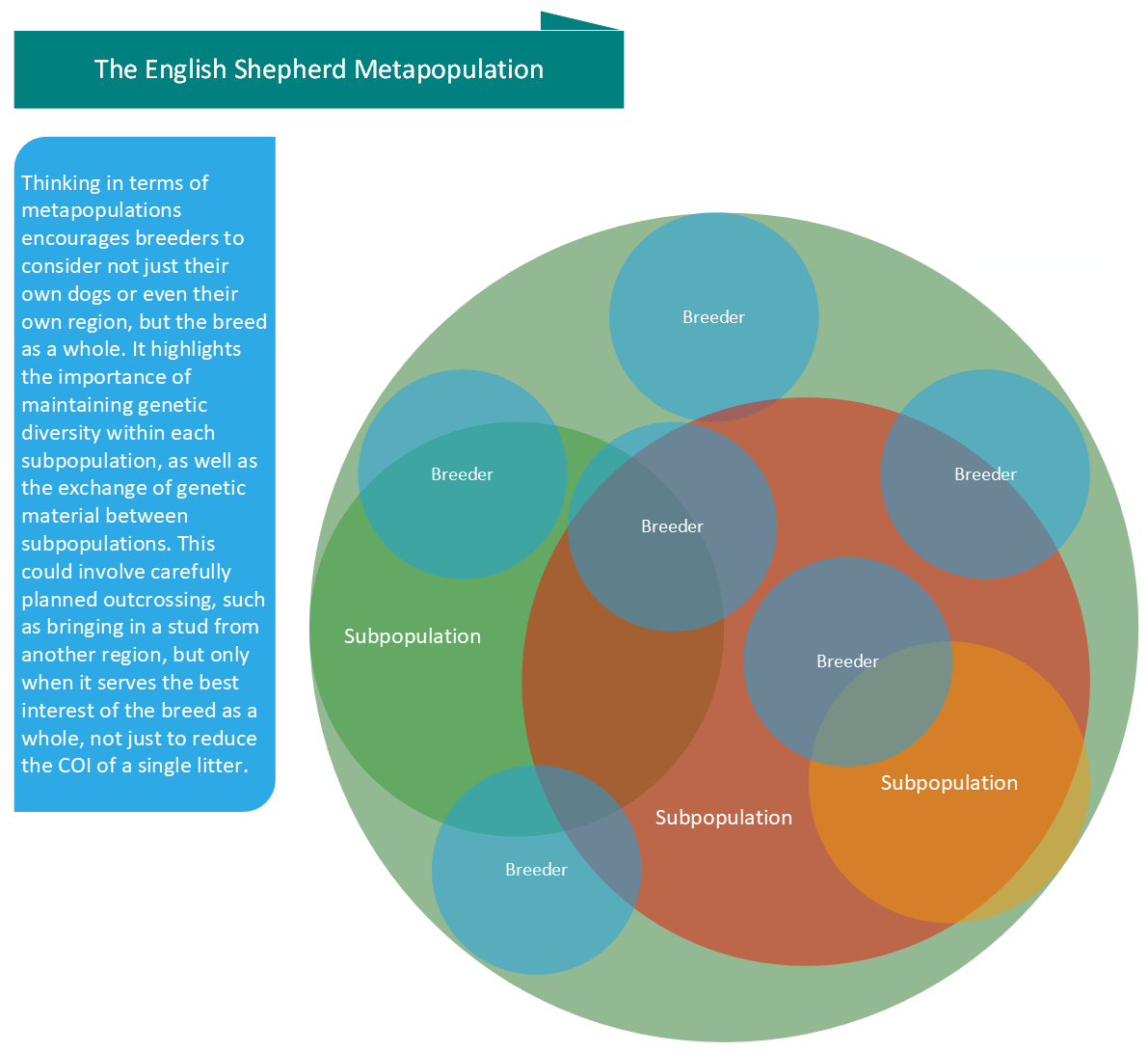The concept of breeders as “conservators” of their breed’s gene pool emphasizes the importance of their role in maintaining and enhancing the health, vitality, and unique traits of their breed.
In conservation biology, the concept of the “metapopulation” is often used to describe a group of geographically isolated populations of the same species. This concept can also be applied to dog breeds, with each breeder or region representing a subpopulation within the breed’s metapopulation.
Thinking in terms of metapopulations encourages breeders to consider not just their own dogs or even their own region, but the breed as a whole. It highlights the importance of maintaining genetic diversity within each subpopulation, as well as the exchange of genetic material between subpopulations. This could involve carefully planned outcrossing, such as bringing in a stud from another region, but only when it serves the best interest of the breed as a whole, not just to reduce the COI of a single litter.
At the same time, breeders must also consider the risk of homogenizing the gene pool if they overuse studs from other regions. A key part of this metapopulation approach is maintaining the unique genetic characteristics of each subpopulation.
Ultimately, this population-level perspective fosters a sense of shared responsibility among breeders. It emphasizes that every breeder is part of a larger community working together to preserve and enhance their breed for future generations. This requires cooperation, collaboration, and open communication among breeders, as well as with breed clubs and registries. It also requires breeders to take a long-term, strategic view of their role, rather than focusing solely on the short-term benefits of their breeding decisions.

